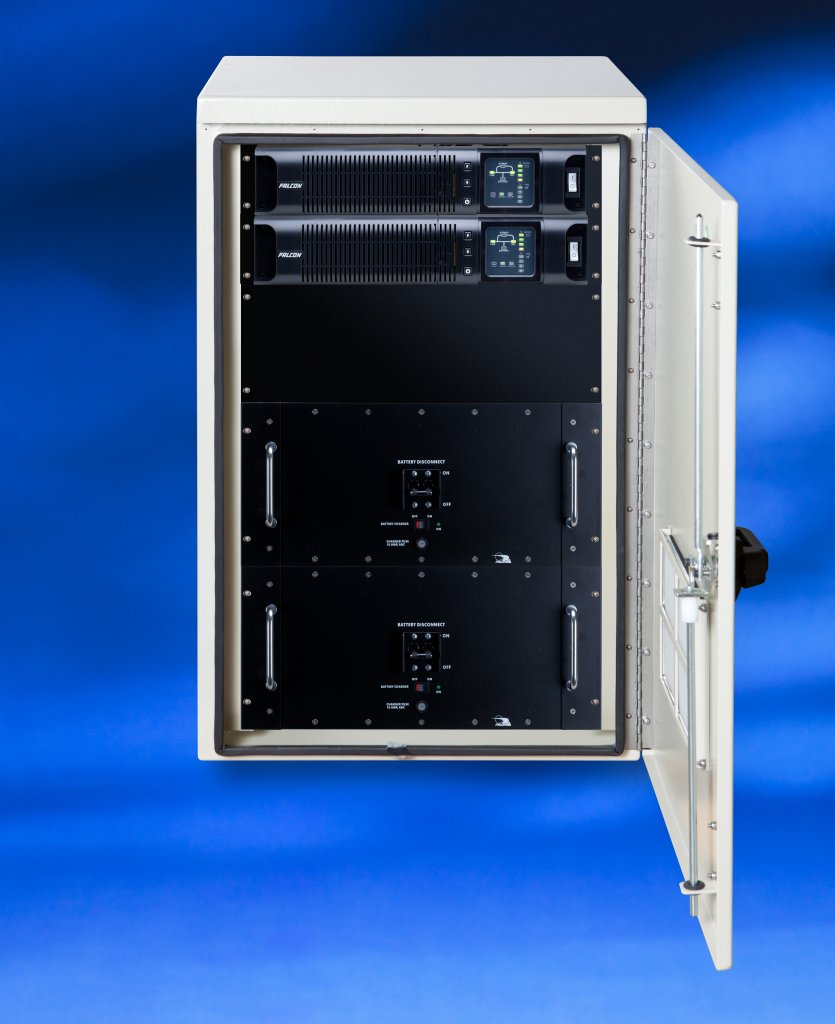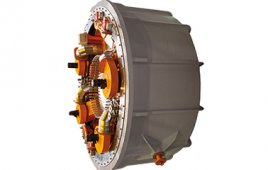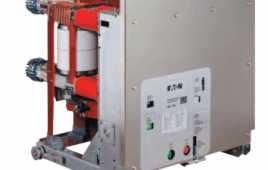
Because wind turbines are often subjected to variable conditions, a reliable control system is needed to ensure continuous operation. Falcon Electric’s SSG Series of pre-configured UPS devices offer a double-conversion online sinewave design that’s UL listed for effective use in extreme temperatures.
Michael A. Stout | Vice President of Engineering | Falcon Electric
The aim of wind-farm operators is to ensure optimal performance and consistent power generation, and maintain the safety and reliability of each turbine. With these goals in mind, there are a myriad of electrical and electronic components to consider for safe turbine operations. Such components include blade-pitch controls, braking systems, I/O modules, relays, hub computers, frequency converters, remote terminal units (RTUs), supervisory control and data acquisition (SCADA) interfaces, distribution boards, and more.
Protecting each of these systems against power disruptions is challenging given the variable nature of wind and harsh environmental conditions most turbines face. What’s more, a conventional uninterruptable power supply (UPS), an electrical device that could provide emergency backup power, isn’t designed to withstand extreme temperatures or sporadic weather conditions.
The operational temperature specifications for most online UPS products on the market are stated as 0° to 40°C (32° to 104°F). As part of a safety agency product evaluation, the temperature ratings of key electronic components, displays, plastics, circuit-board materials, insulating materials, and batteries are verified to stay within certain temperature specifications, while the UPS operates over the entire manufacturer-specified temperature range. Most UPS units have also undergone safety-agency testing over the manufacturer’s stated operational temperature range and have received a Nationally Recognized Testing Laboratory or Underwriters Laboratories listing for use over the stated range. But most are also engineered for use in an indoor, temperature-controlled environment, which isn’t typical of a wind-farm environment. So, it’s important to know what to expect when selecting a system.
Installing a commercial, off-the-shelf UPS as a backup power device in a wind turbine might save money in the short term, but it isn’t a secure investment for the nearinstantaneous protection from potential power interruptions that turbines are likely to encounter. Industrial-grade UPS’s are for harsh environments. These devices offer high-temperature components with an operating range of -30° to 60°C (-22° to 140°F) that better meets most wind-farm conditions.
Some industrial UPS units are even pre-packaged inside NEMA 3 and environmentally controlled NEMA 4-rated enclosures. The National Association of Electrical Equipment’s “NEMA”-rated enclosure are constructed for indoor or outdoor use and provide a high degree of protection to personnel against access to the equipment’s hazardous parts and to the internal equipment (for instance, against foreign objects such as wind-blown dirt). NEMA- 4 protection also safeguards equipment against water and ice.

An industrial, online UPS eliminates many kinds of power anomalies, providing a much more stable power source when operating from utility and with batteries.
These turnkey systems provide a fast, cost-effective solution for deploying highlevel power conditioning and backup in harsh-rated environments, such as those common to wind farms. For NEMA 3-rated systems, however, it’s important to pair the UPS with reliable batteries that support a wide operational temperature range. This is not the case for environmentally controlled NEMA 4 systems where it’s possible to incorporate 10-year, long-life batteries.
The best industrial UPS devices also feature double-conversion online technology. In an online UPS, the batteries are always connected to the inverter instead of the ac power, so power-transfer switches are unnecessary. Through continuous regeneration of new, uninterrupted ac power, the double-conversion UPS provides the highest level of power conditioning and protection, in addition to providing long-term battery backup protection.
The UPS design topology is similar to that of a switch-mode power supply. The online UPS rectifies and filters the incoming utility or generator power to a steady, regulated direct current (dc). Frequency variation, high-voltage transients, voltage sags and swells, and harmonic distortion aren’t a concern and don’t affect power reliability.
Clean, regulated dc is then fed to a pulse-width modulated inverter stage that recreates clean, tightly regulated, true sinewave ac power. Before drawing power from its internal battery, the online UPS also has large electrolytic-storage capacitors that let it ride through voltage dropouts. Unlike a switch-mode power supply, the online UPS has an advantage with battery backup capabilities that power critical equipment for minutes from its internal batteries to hours or days using extended battery packs.
When it comes to protecting critical wind-turbine systems located in harsh temperature environments, consider UPS units that are built from the ground up to withstand wide temperature variances and operate reliably over the long term. While the initial purchase price of a non-industrial UPS is less expensive, the return on investment is lower because maintenance issues and required battery replacements far outweigh initial cost savings.
Double-conversion online industrial UPS devices currently offer the highest level of power conditioning and battery backup protection that wind-turbine applications require. Wind-farm operators looking to safeguard their investment are well served to research and select UPS options that protect against power pollution and provide long-term reliability in demanding environments.
For a digital copy of the entire August issue of Windpower Engineering & Development, click here.
Filed Under: Generators



